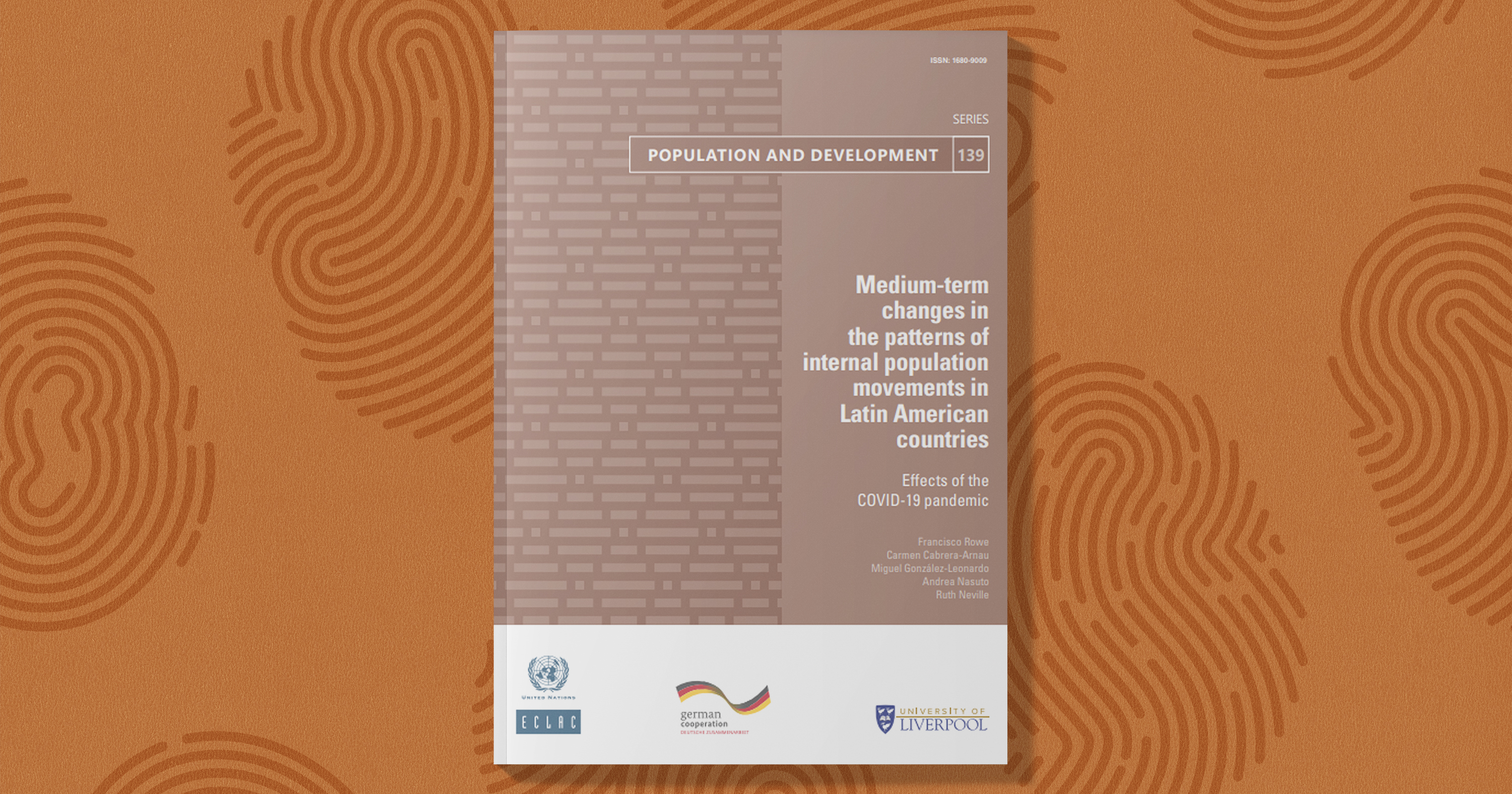New publication in ECLAC's Population and Development Series shows the use of digital footprint data to measure and analyse population mobility
Work area(s)
Topic(s)
The paper "Medium-term changes in internal population movements in Latin American countries: the effects of the COVID-19 pandemic", No. 139 of the Population and Development Series uses digital footprint data to estimate changes in mobility intensities and patterns during the pandemic.

Existing evidence has shown that the COVID-19 pandemic modified patterns of internal population movements. The authors have contributed to this body of evidence by analysing, for example, the case of Spain and the United Kingdom. All this evidence, however, focuses on countries in the Global North and has been limited to investigating the immediate effects of COVID-19 during 2020. A major limitation to analyse changes in the mobility patterns within countries in the Global South, including Latin America, has been the lack of data.
Publication No. 139 of the Population and Development Series uses the notion of "digital footprint" to measure changes in internal population movements in Latin American countries. It uses aggregated and anonymised mobile phone location data from Meta-Facebook users to quantify and analyse the intensity and geographic patterns of internal population movements across the urban hierarchy in Argentina, Chile and Mexico over a 26-month period, from March 2020 to May 2022.
The results reveal a systematic and widespread decrease in the intensity of short- and long-distance movements during periods with high levels of restrictions in 2020, with larger reductions in the most densely populated areas in capital cities. They also reveal that following the relaxation of restriction measures, mobility intensities increased, approaching those recorded before the pandemic. However, their average levels remained below pre-pandemic levels in 2022.
These findings support, to some extent, the hypothesis of an urban exodus, as they reveal the persistence of negative net balances in short-distance movements in the capital cities of Argentina and Mexico, reflecting a pattern of suburbanisation. Chile shows no substantial changes in the net balance of short-distance movements, but net losses in long-distance movements. These losses were, however, temporary, shifting to neutral or positive balances in 2021 and 2022. This contrasts with the pattern of net migration losses observed in the Santiago Metropolitan Region over the last 20 years.
The authors propose "that the use of digital footprint data is an important asset that national statistical offices and local governments should embrace. The availability of such data in real time enables rapid identification of changes in human mobility, complementing the use of censuses and surveys, to inform the development of appropriate responses to crisis situations in the context of climate change and the reported threat of another pandemic similar to, or worse than, COVID-19".